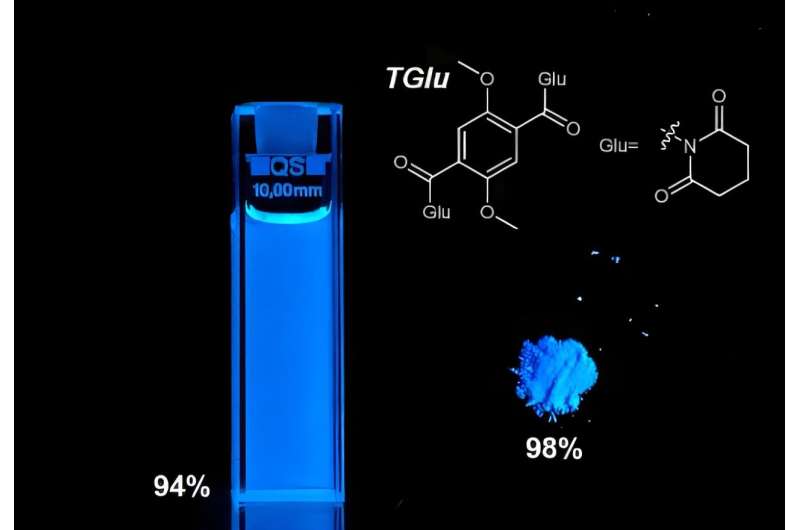In a groundbreaking study led by the University of Michigan, a new blue fluorescent molecule has achieved unprecedented emission efficiencies in both solid and liquid states. This discovery, published in the journal Nature Communications, holds promise for significant advancements in technology and medicine.
Fluorescent molecules, known as fluorophores, are crucial in OLED displays and medical imaging, where they absorb light and re-emit it at lower energy levels. Typically, fluorophores are optimized for either solid or liquid states, but rarely both. The newly discovered molecule, however, excels in both environments, marking a significant leap forward in the field.
Record-Breaking Efficiency
The study reports that the new fluorophore achieved a record 98% quantum efficiency in the solid state and 94% in solution. According to Jinsang Kim, the Raoul Kopelman Collegiate Professor of Science and Engineering at the University of Michigan, this breakthrough could streamline the design and development process for future applications.
“By investigating and establishing a molecular design principle to make fluorophores that are bright both in solution and solid states, we have reduced development time and cost for various future applications,” said Kim.
Traditionally, engineers begin with fluorophores in solution to explore their optical properties, often encountering challenges when transitioning to solid-state applications. This new molecule, dubbed TGlu, emerged unexpectedly during chemical design experiments.
The Discovery of TGlu
Lead author Jung-Moo Heo, a postdoctoral research fellow at the University of Michigan, discovered TGlu as an intermediate step in another chemical design. Heo noted its surprising emissive properties in both solution and solid states, prompting a systematic study to optimize its design.
The resulting structure is elegantly simple: a single benzene ring core with strategically placed donor and acceptor groups. This quadrupolar structure distributes charge symmetrically, ensuring stable emission across various environments.
“This spatial arrangement reduces the energy gap, allowing the fluorophore to emit blue light efficiently,” explained Heo.
Implications and Future Directions
The development of TGlu represents a significant advancement in the field of fluorophores, particularly due to its small size and high efficiency. Typically, small band gaps are associated with efficiency drawbacks, as they often lead to energy loss as heat. However, the researchers found an acceptor group that stabilizes the excited state, minimizing heat loss through conical intersections.
In the solid state, the bulky acceptor groups prevent molecules from quenching, a common issue where energy escapes as heat instead of light. This design not only enhances brightness but also simplifies production, requiring just three steps, which increases scalability and reduces costs.
Looking ahead, the researchers plan to adjust the band gap to explore different colors and test device performance under electrical excitation. There is also interest in developing a phosphorescent version of the molecule, which could offer even greater energy efficiency for display technologies.
Collaborative Efforts and Broader Impact
This research was a collaborative effort, with contributions from the Autonomous University of Madrid, University of Valencia, Eberhard Karls University Tübingen, and Seoul National University. The findings not only pave the way for more efficient display technologies but also hold potential for advances in medical imaging and diagnostics.
As the scientific community continues to explore the applications of this versatile fluorophore, the implications for both technology and medicine are vast. The ability to efficiently emit light in both solid and liquid states could revolutionize the design of future devices and diagnostic tools.
For those interested in staying updated on such scientific breakthroughs, Phys.org offers a free newsletter that provides insights into the latest research and innovations.
